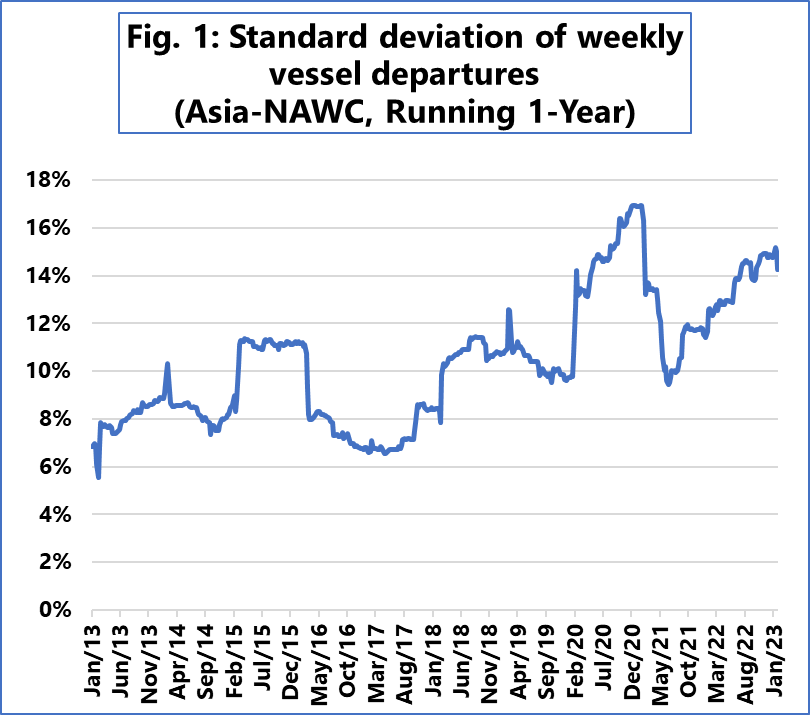The fluctuations in ship sailing have increased "sharply" compared to before the pandemic.
Sea Intelligence said in a statement that sailing volatility persists or has worsened in major shipping routes.
"In an ideal world, there should be a set number of sailings in any given week on any given trade, which would match the number of underlying services offered on the trade. This is, however, hardly the case, as vessel delays/early arrivals, blank sailings, and extra-loaders, all increase the volatility in the number of sailings per week," said Alan Murphy, CEO, Sea-Intelligence.
"Moreover, the fluctuations have increased sharply compared to before the pandemic," he added.
To illustrate this phenomenon, the maritime analyst calculated the standard deviation of the data (in percentage terms), seen over a rolling 1-year period from January 2012 to January 2023. (For Asia-North America West Coast, this is shown in figure 1.)

Source: Sea-Intelligence
"The volatility, in terms of how many vessels more or less are sailing from week to week, has increased dramatically into the North America West Coast," Sea-Intelligence said, adding that while the apex was reached in early 2021, the maritime analyst is beginning to see "another phase" of consistently increasing volatility heading into 2023.
On Asia-North America East Coast, the apex was reached in January 2022, and since then, while the volatility has fallen and settled at a slightly lower level, it is still higher than in the pre-pandemic period.
In Asia-North Europe, the volatility in the number of sailings was on an increasing slope ever since 2013, making sharp jumps in both early 2020 and the summer of 2021.